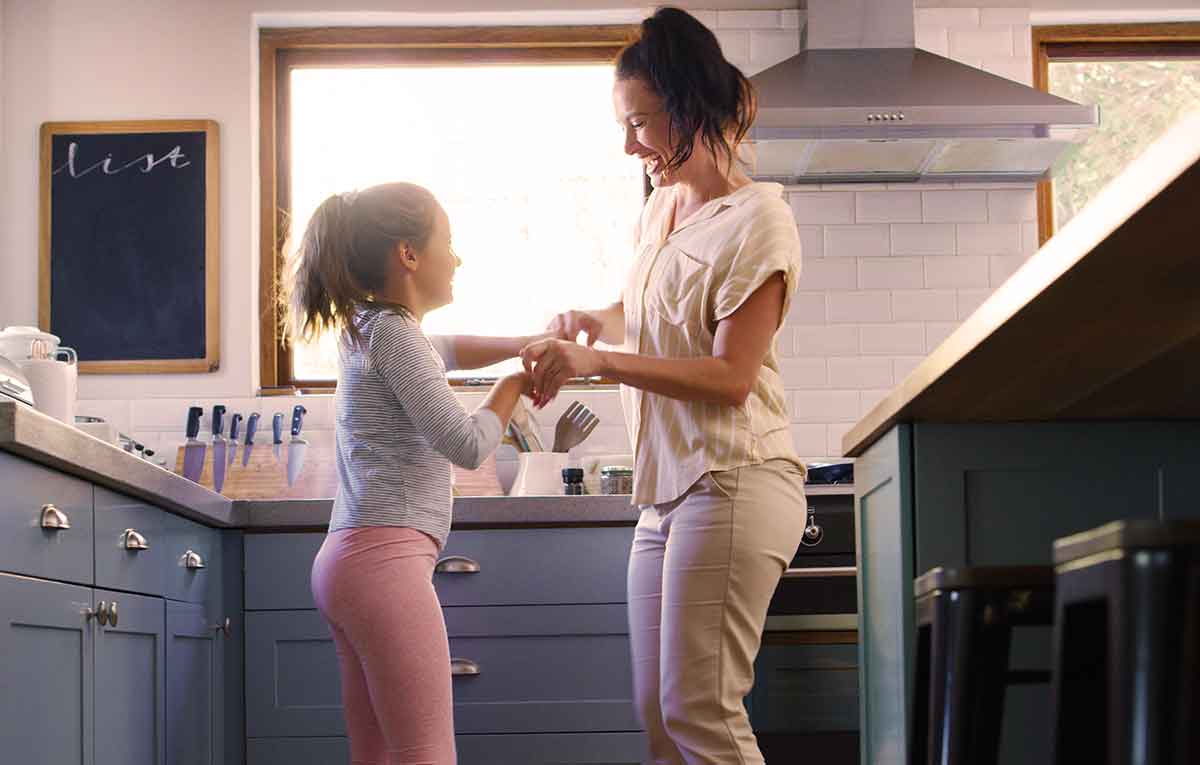Building Your Family’s Self-Care Toolkit
Self-care is simple in theory and more complicated in practice.
Self-care is never an easy conversation for me to have.
For me, this conversation consistently arises in a time of adversity. Some event exhausts a person’s or family’s previously established set of coping strategies. As a pediatric psychologist, I tend to meet individuals and their families during times of adversity. For some, it’s a new diagnosis or recent injury. For others, there is a change in prognosis. Others simply feel overwhelmed or out of control. Now, more than ever, we are experiencing new and enduring adversity. In my work, adversity often highlights inequality when comparing ourselves to others. These comparisons often come in the form of “should statements” (e.g., I should be doing better. I should be happier. My problems aren’t as big as others’ problems.). These thoughts tempt us to allow self-criticism and doubt to become the loudest voices in our head. During this time of adversity and vulnerability, advice seldom comes invited, but a connection is often welcomed and paves the way to treatment when one is feeling isolated and overwhelmed.
The key to self-care is to be gentle with yourself. We are often most unkind to ourselves. I commonly use two metaphors to discuss how to be kind to yourself when discussing self-care with my clients: the budget and the bucket.
For parents and caregivers, I use the budget metaphor. We have to save up our time, energy, patience, and love in order to spend them. For a budget, like self-care, we are seeking balance between income (i.e., time and energy available) and expenses (i.e., time and energy spent). Ideally, expenses do not outpace income. However, this balance can be difficult to set and maintain. Just like a financial budget, it takes practice and dedication. This metaphor allows a way to set goals and measure progress.
For children, I use the bucket metaphor. We each carry a set of strategies that we use to cope with adversity. I call this our bucket of water. Each time there is a stress or change, a hole is punched in our bucket, and water (e.g., coping resources) leaks out. Each time we take time to care, relax, and be kind to ourselves, we find ways to patch a hole and hopefully add a bit of water back into our bucket.
The sell is simple. When you are able to care for yourself, you are better able to care for others. There are countless examples across academic, clinical, and consumer-based media that outline the benefits of self-care practice. However, when attempting to practice self-care in your daily life, the stumbling blocks are also innumerable.
This is where my second sell comes. A little effort and planning ahead saves a lot of effort and stress over time. The key for me to practice what I teach is to keep my plan for self-care simple and flexible. The enticing side of self-care is it can seem like life’s destination instead of part of the journey. Self-care is not going to a spa or taking a vacation. Self-care is finding small moments every day to be kind to myself. I had to build self-care into my daily routine as I found myself not able or willing to set aside time, energy, or finances for spa days or other activities that I had thought self-care meant. Although I still find value in those practices, I needed daily ways to budget my resources and fill my bucket. Here are two examples of my daily self-care practices.
- First thing in the morning, I prioritize greeting my dogs with their wagging tails and happy faces before embarking on an early morning walk. The cool air, my dogs’ exploration, and the quiet of the morning allow me to feel grounded in the present. When possible, I try to limit myself to focusing on completing one thing at a time. Words of my father echo in my head, “if it’s worth doing, it’s worth doing right.”
- When I feel the stress of the day set in with to-do lists and schedules, one way for me to stay grounded is allow myself a bit of fun and spontaneity. Currently, one-song dance parties with my child are my go-to strategy. The song may change, but the purpose remains the same (e.g., how can we wiggle our worries away?). My self-care regime is based on what helps me feel more human and healthy.
In order to build a self-care plan, I have to remember that just like thoughts and emotions, self-care is an individualized act. I find exercise or talking to others relaxing, but this is my experience. Circling back to my metaphors, the questions of what fills your bucket or budget becomes paramount. We often start with building a coping or self-care kit. The idea is that having these items more easily accessible will increase the likelihood that people will use them to engage in self-care.
Questions to guide building your own self-care kit with some examples are below. The most important part is you have to find something that fills your individual bucket. Self-care—just like preferences in food, music, and entertainment—are personal and unique.
- What soothes your senses? lotions, perfumes/candles, teas/coffee, healthy snacks, water bottles, music/nature sounds
- What eases your mind? pictures, cards, and letters of positive memories, journaling, learning something new, building playlists, listening to audio books, self-affirmations
- What allows you to expend excess energy or keep your hands busy? fidgets, stress balls, small toys exercising, stretching or yoga, walking, playing with pets, jumping on a trampoline
- What reminds me that I am of value? makeup, accessories, clothes, positive affirmations, share a story on social media with friends and family
- What helps me find connection? call a friend or family member, join a supportive group on or offline, plan a fun night with friends, have a family game night, watch home movies.
Coping across a family can look as similar or diverse as families themselves. For children and families, exploration and experimentation is the key to developing self-care as a life skill. Just like their needs and interests, their coping kits develop over time. If I can do it, you can too. If you need help, this is a great goal to work toward with the support of a health service psychologist.

